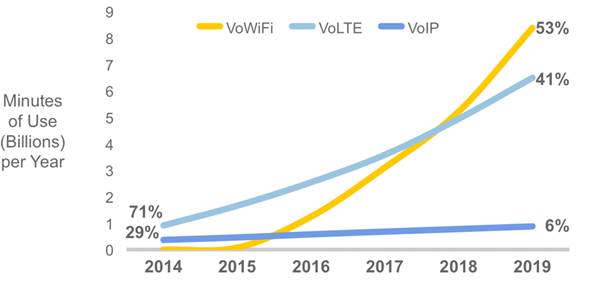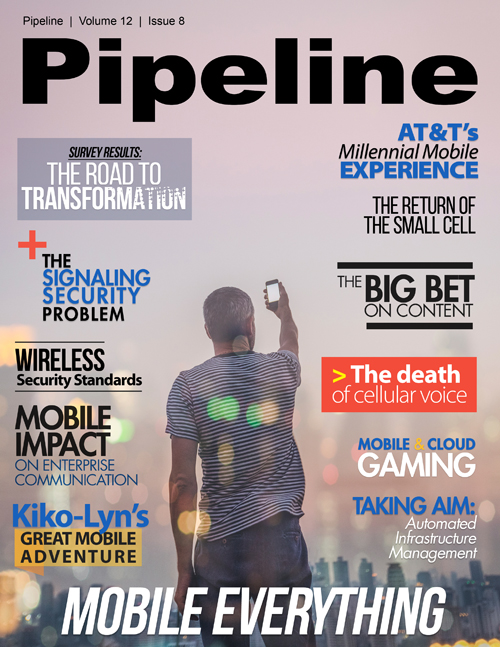The Death of Cellular Voice
From the MNO perspective, mobile voice usage and revenues as a percentage of overall revenue have been declining for many years now in North America. In Europe, Africa and Asia the tipping point occurred in a similar time frame from 2012 to 2014, with the larger portion of revenue shifting from mobile voice to data. Most other global regions are expected to follow as advanced 4G and 5G networks enter new markets and smartphone technology penetrates much of the third world.
A recent report entitled “The Unbearable Lightness of Mobile Voice,” by TECHNECONOMYBLOG clearly shows this trend toward decreasing mobile voice usage. And although the report states that mobile voice is far from dead, it certainly doesn’t seem to be moving in the right direction in terms of revenue and customer demand.
According to Cisco Systems, over half of voice traffic in North America will take place over WiFi connections by the end of this decade.

In India, a report by Credit Suisse forecasts that half of the revenue from voice and messaging could be eliminated by VoIP apps such as WhatsApp and Skype. This is a major threat to network operators in India where 80 per cent of their revenue still comes from voice. The Credit Suisse report goes on to say that the impact of VOIP will cause the providers to increase their data tariffs, slowing the adoption of broadband. Similar stories out of South Africa, Malaysia and other parts of the world indicate that this is a global trend.
Clearly, the combined issues of reported poor service quality and revenue shifting away from mobile voice to data and other services will continue to drive the telecom industry towards new means of monetizing data and application services. With no foreseeable increase in future revenue from mobile voice, investment in cellular networks to support mobile voice will decline in favor of investment in data infrastructures, paving the way for wide-spread adoption of mobile VOIP.
Faced with these changes in customer behavior and network usage, operators, carriers and major service providers are responding by offering WiFi calling services, adjusting their revenue models and planning for the eventual shift toward data-only networks as part of their 5G strategy.
Network Operator WiFi Calling
AT&T has responded by introducing automatic WiFi Calling by AT&T. The service will automatically place a VOIP call if the cellular network is either weak or completely unavailable. So far, the service is only available within the United States, and U.S. territories of Puerto Rico and the Virgin Islands. It also only works if you use an iPhone 6.
Verizon has also announced the availability of WiFi Calling by Verizon, but only for Android-based Samsung Galaxy S6 phones for now with other devices, including iPhones, sometime later in 2016.
Sprint has WiFi calling for both Android and iOS devices, but only the Android devices will support SMS when a cellular connection isn’t available.
Of course if you’ve been following WiFi calling from the major U.S. carriers, you’d already be aware that CNET reported that Sprint and T-Mobile introduced their services years ago, with T-Mobile first introducing their Wifi calling service way back in 2007.





















